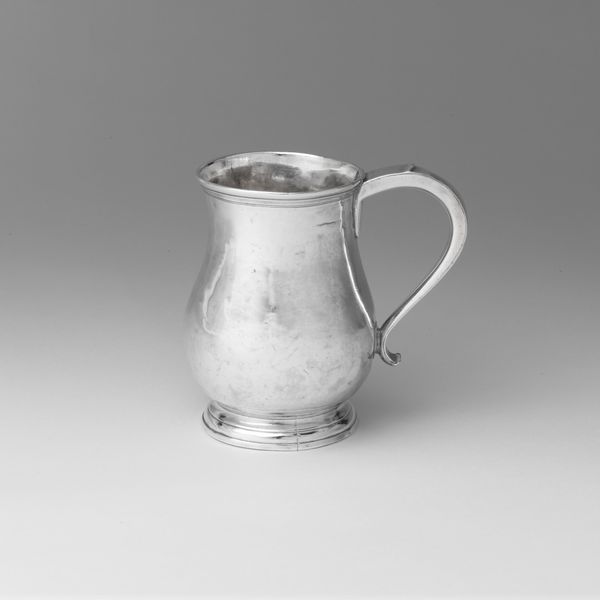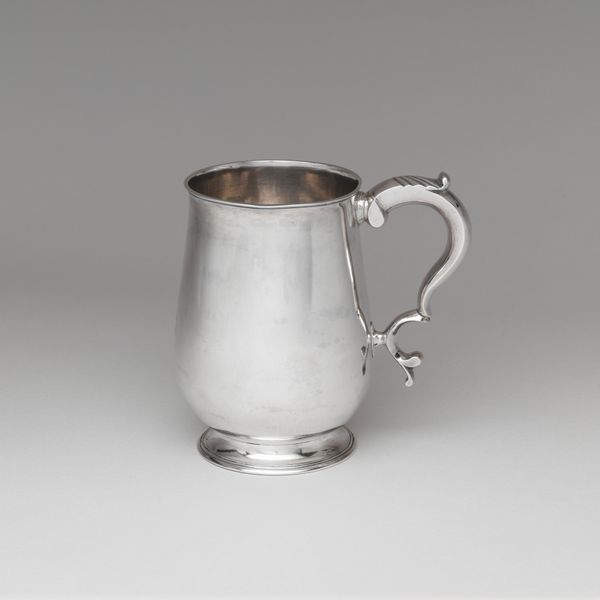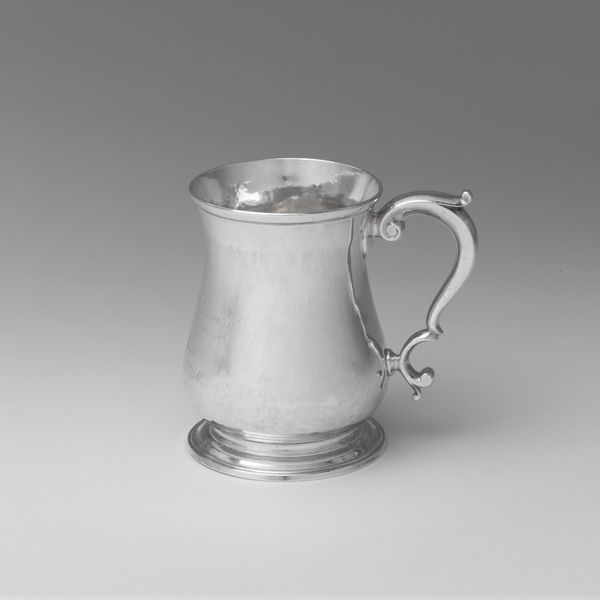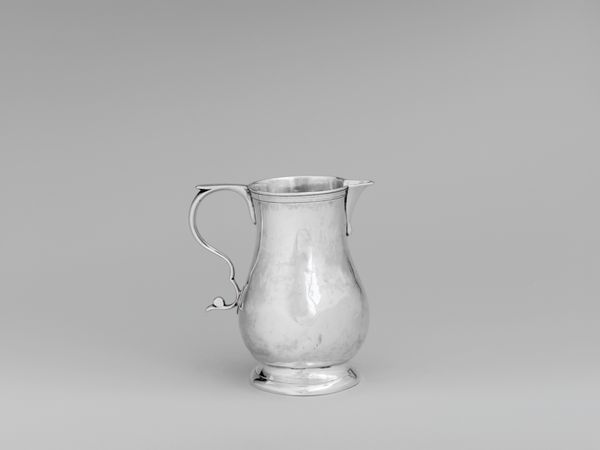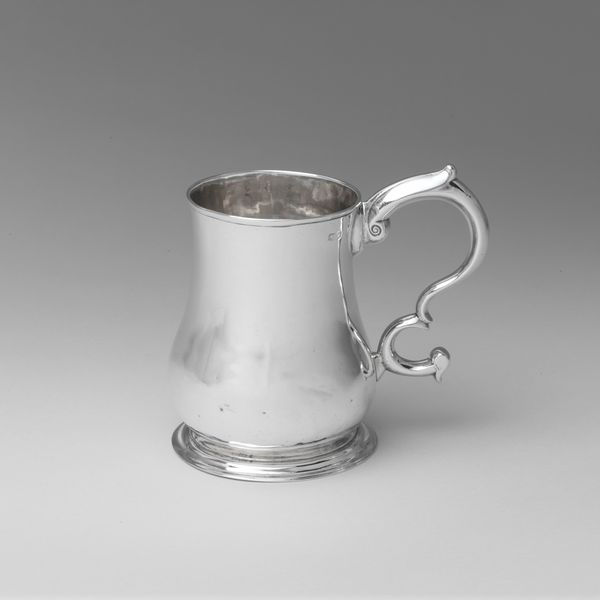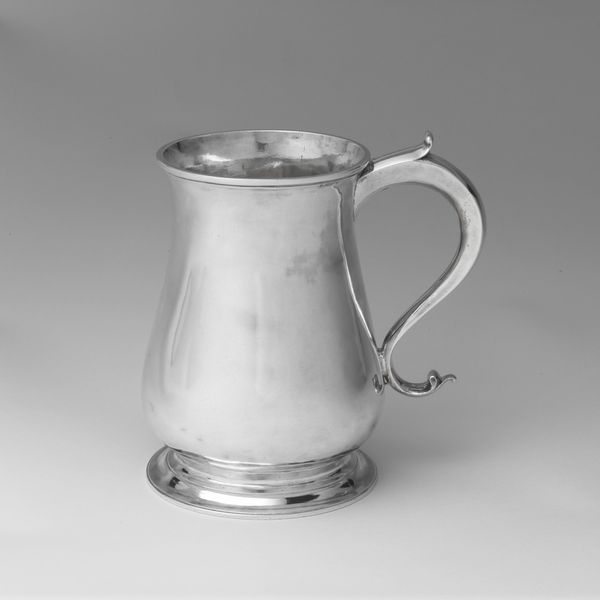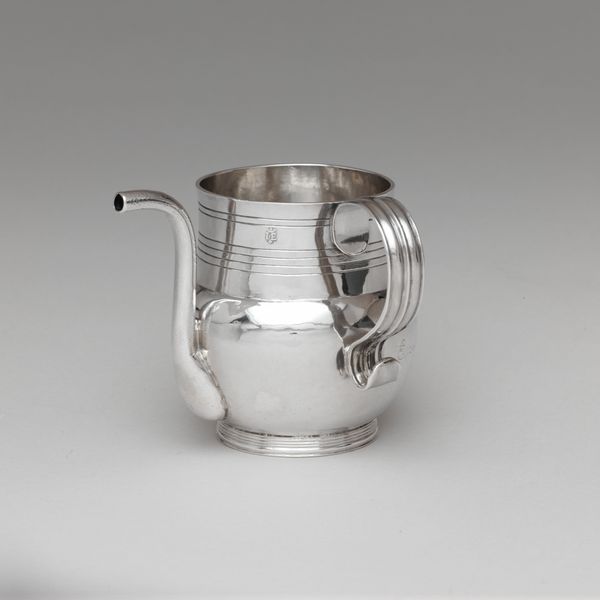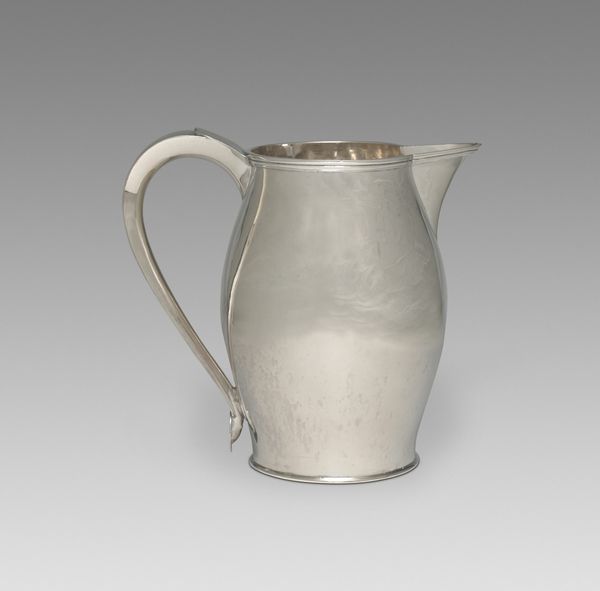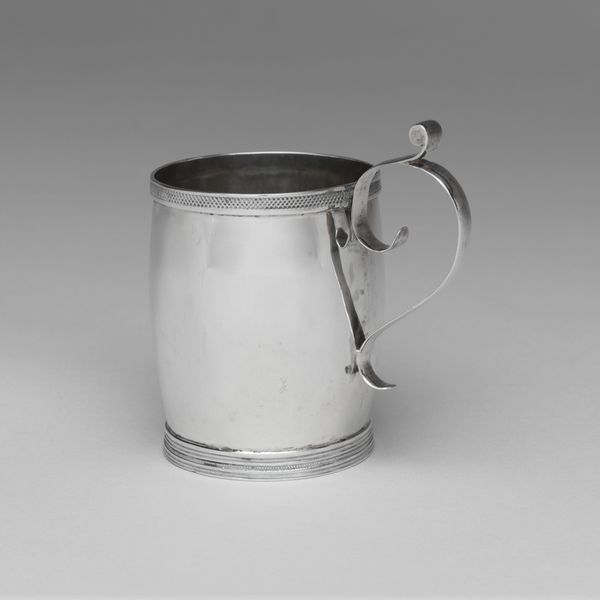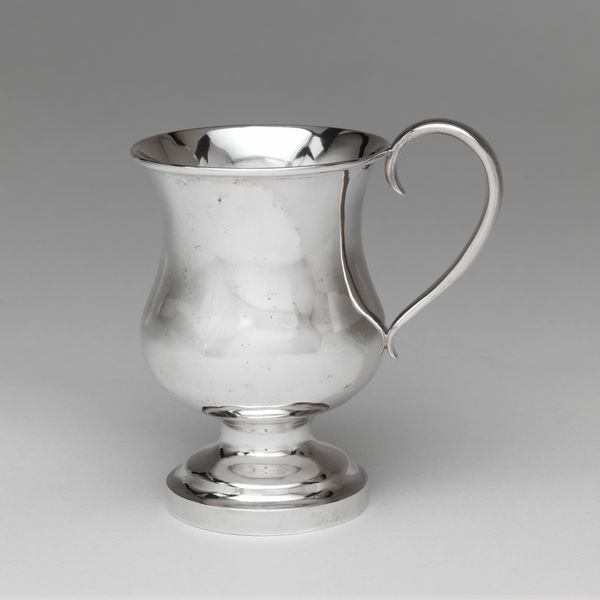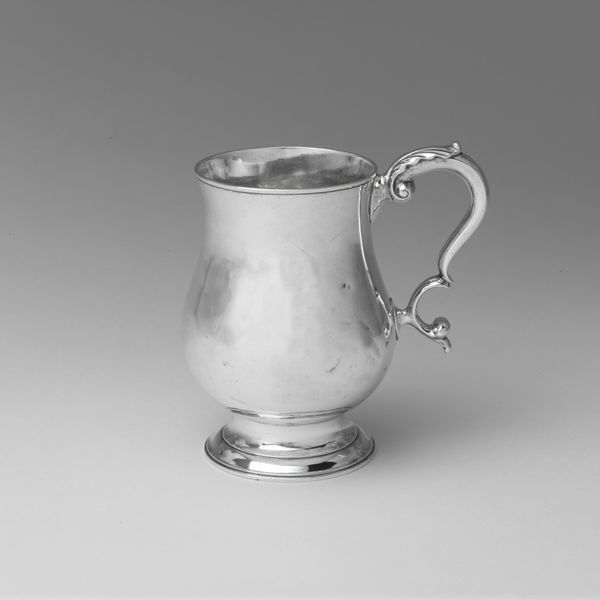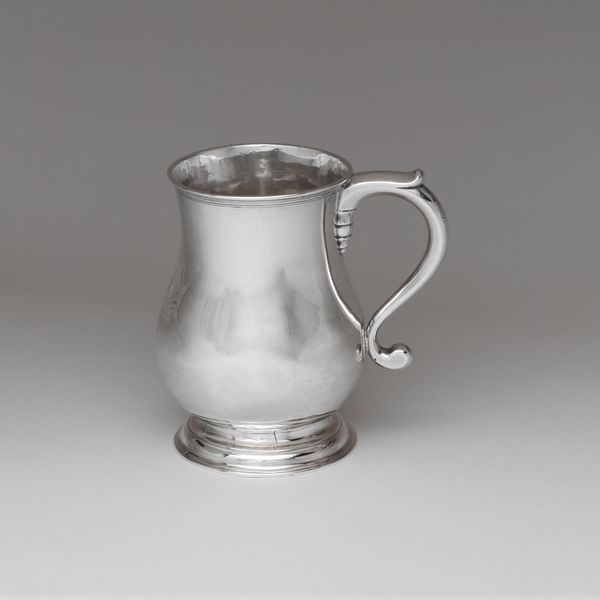
silver, metal, photography
#
silver
#
baroque
#
metal
#
photography
#
product photography
#
decorative-art
Dimensions: Overall: 4 1/2 x 4 7/8 in. (11.4 x 12.4 cm); 8 oz. 6 dwt. (257.7 g) Lip: Diam. 2 7/8 in. (7.3 cm) Foot: Diam. 2 13/16 in. (7.1 cm)
Copyright: Public Domain
Curator: Well, well, well, look at this beauty. This is a silver cann, dating back to 1735-1745, currently residing at the Met. Quite the shiny chap, wouldn't you agree? Editor: Immediately, I see craft, labor. I'm thinking about the silversmith, the process—hammering, annealing, polishing—and the economic system that sustained such specialized work. Curator: Oh, the sheer artistry! It’s Baroque, definitely. The curves, the heft, I can almost feel the stories it could tell. What kind of ale was sipped from its gleaming depths? Were toasts raised? It sparks the imagination. Editor: The silver itself is crucial. Where did it come from? Mines, likely fueled by exploited labor, perhaps even slave labor, if we consider the broader context of that era. Consumption and empire are always linked in these objects. Curator: It's about presence. This cann has it in spades. Think of the light playing off the polished silver. And its sturdiness speaks volumes. Meant to be used, appreciated, perhaps passed down as a family heirloom. Editor: Consider its functionality too, though. A cann isn't just "art"—it's a drinking vessel, intended for consumption. It implicates social rituals, the culture of taverns or homes where it was used. The decorative flourishes still speak of status, though. Curator: Status indeed. Though the details seem muted compared to a Rococo epergne overflowing with fruit and mythical figures, still. I am still charmed. It invites reverie, it inspires stories… imagine the life this cann has had. Editor: What’s most potent for me is not its inherent value as an "art object" but as a marker of complex material, labor, and exchange networks that supported its production. Every piece bears these complex traces. Curator: Exactly. We get to project into the object; not only enjoy but question how we even look back on our current practices when viewing artwork such as this, centuries in the future. Editor: Right, and if we truly understand such complexities, we approach the aesthetics more thoughtfully and consider social accountability to make way for equitable means for our work too.
Comments
No comments
Be the first to comment and join the conversation on the ultimate creative platform.
